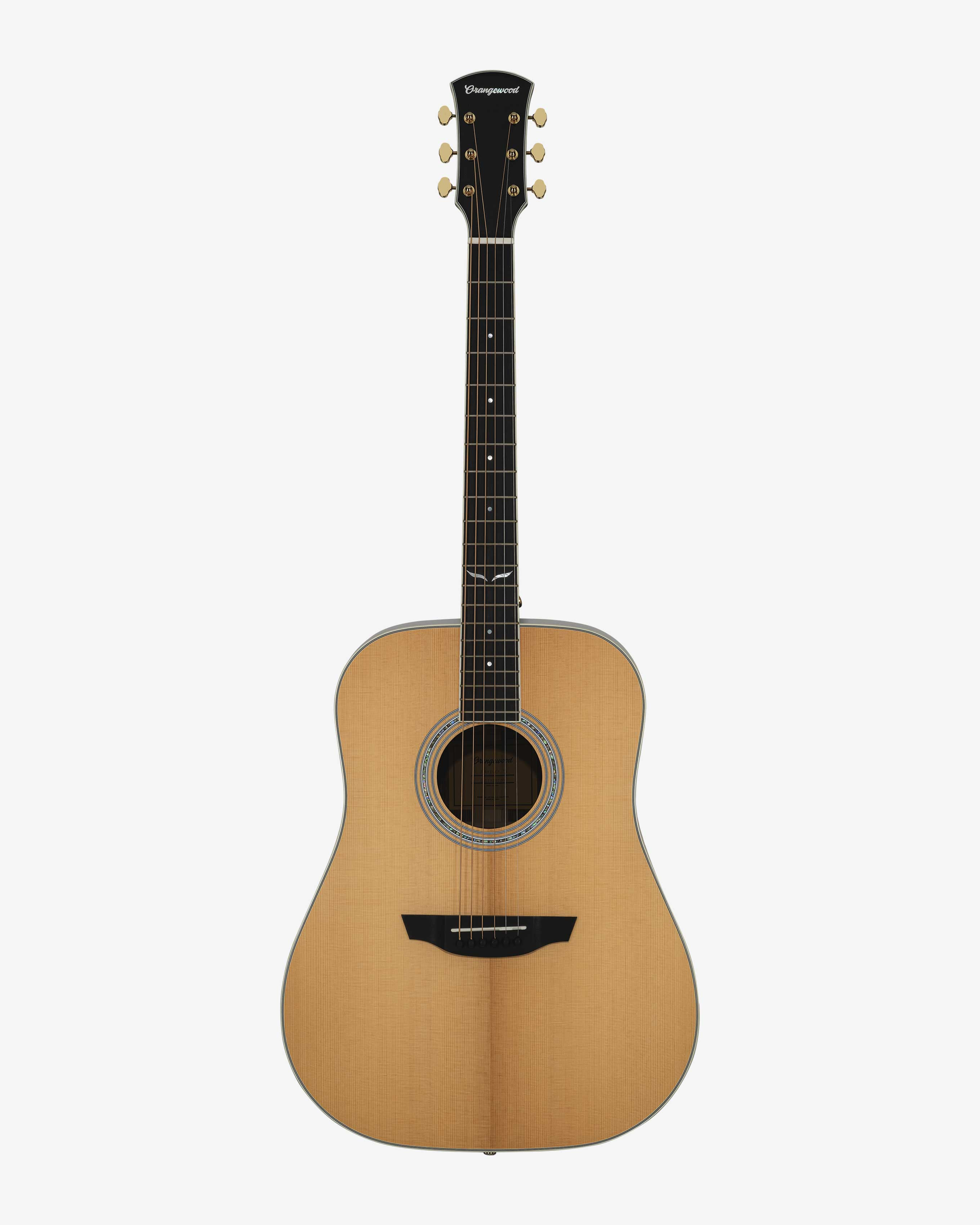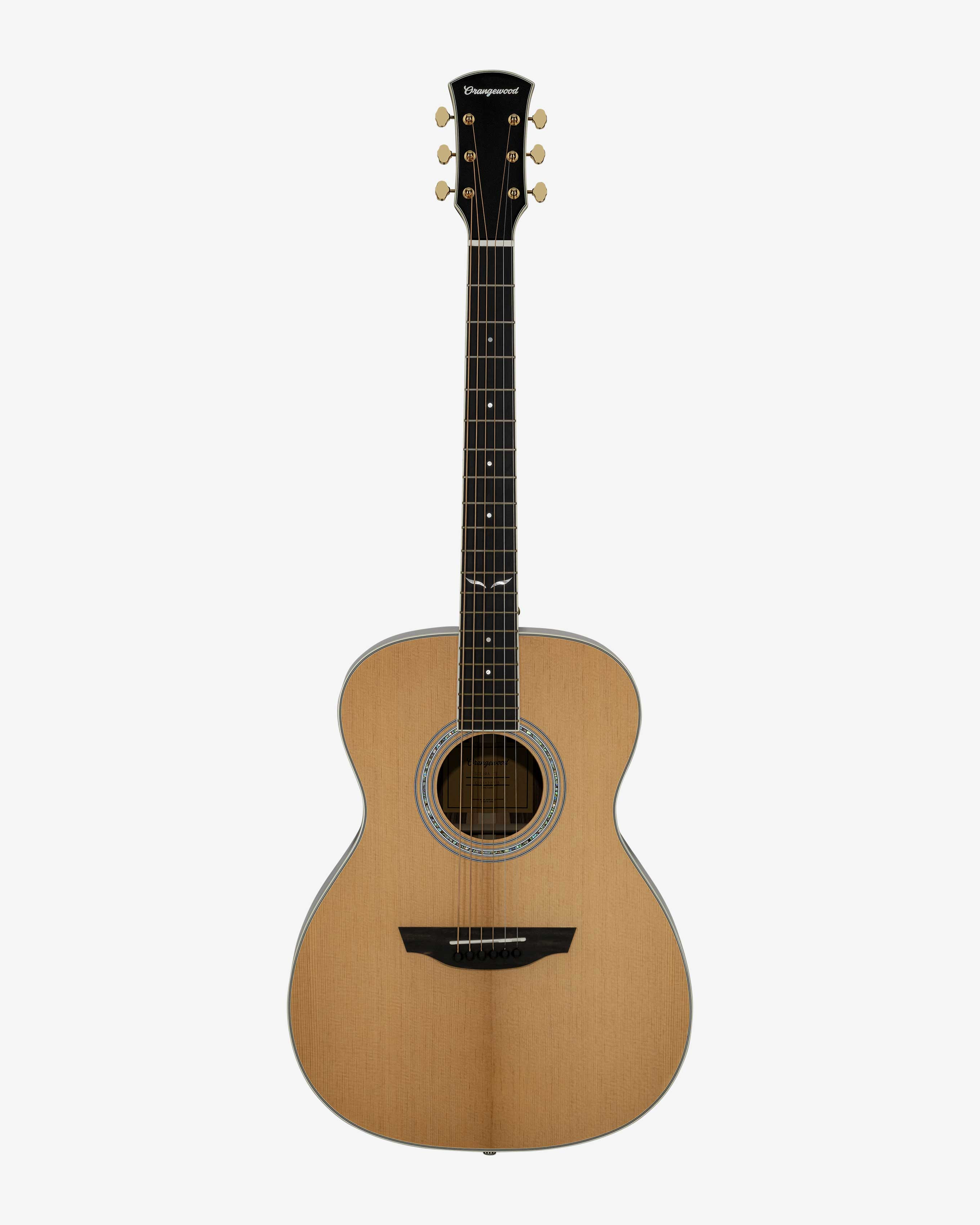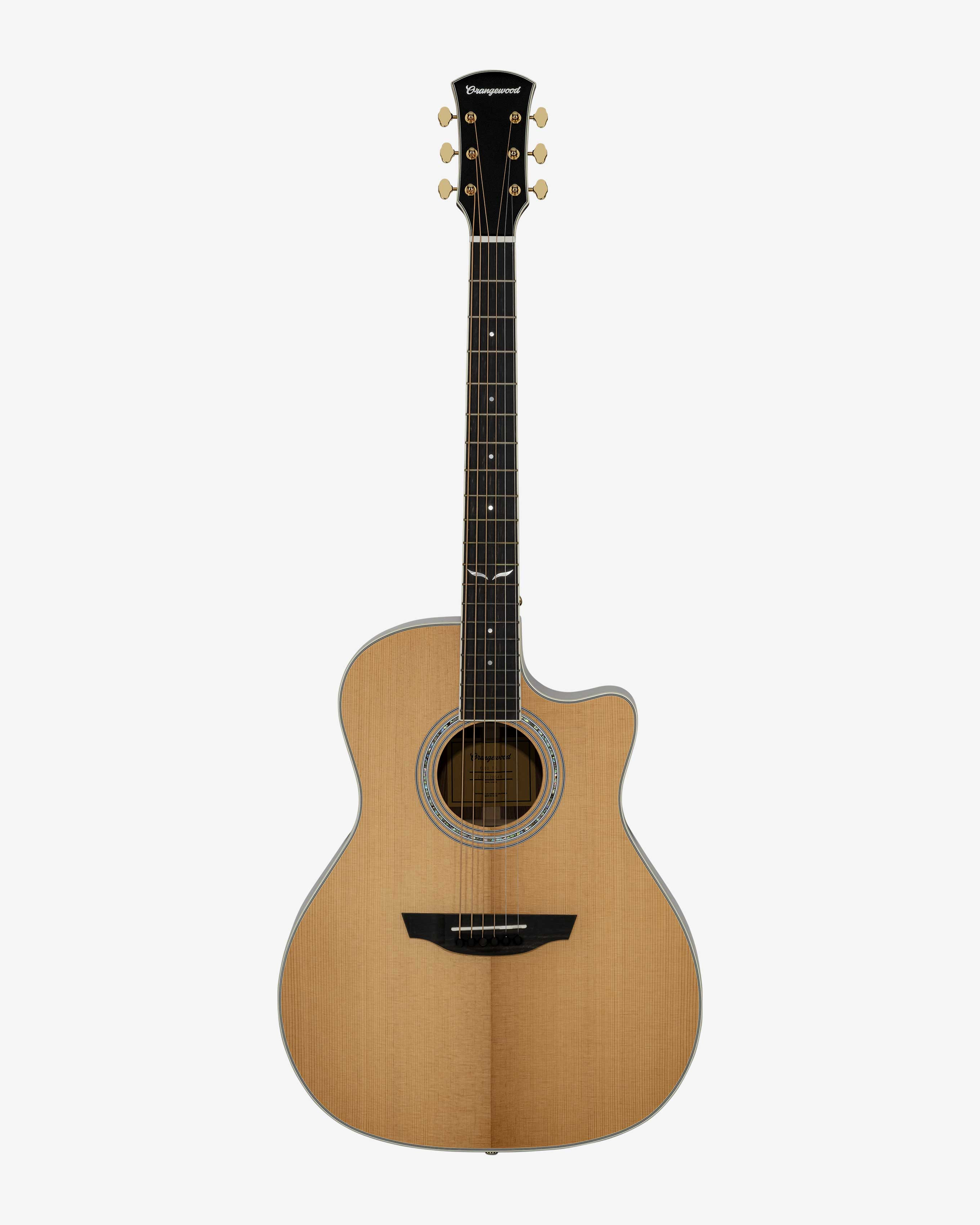Choosing an acoustic guitar can be exciting, but with so many options available, it’s important to understand the key factors that influence your instrument’s sound and feel. One of the most significant aspects is the guitar body shape. Just like snowflakes, no two guitars are exactly alike, and body shape plays a crucial role in determining a guitar’s unique sonic character and playing experience. Whether you’re drawn to the classic acoustic guitar silhouette or seeking a distinctive sound, understanding Guitar Body Shapes is essential to finding the perfect match for your musical aspirations.
At guitarplayers.net, we believe in helping you craft your dream sound. That’s why we’re diving deep into the world of acoustic guitar body shapes. This guide will explore three of the most popular shapes in today’s market: the dreadnought, the grand concert, and the grand auditorium cutaway. We’ll examine the aesthetics, comfort, and, most importantly, the tonal nuances of each body shape to help you determine which one aligns best with your playing style and musical preferences.
The Powerful Dreadnought
 Torrefied spruce dreadnought acoustic guitar with ebony fretboard, mother of pearl fretboard inlays, abalone rosette, and gold hardware
Torrefied spruce dreadnought acoustic guitar with ebony fretboard, mother of pearl fretboard inlays, abalone rosette, and gold hardware
Alt text: Dreadnought acoustic guitar featuring a torrefied spruce top, ebony fretboard with mother of pearl inlays, abalone rosette, and gold hardware, showcasing its large and resonant body shape.
First up is the iconic dreadnought guitar body shape. When most people envision an acoustic guitar, the dreadnought is often the image that comes to mind. As the largest of the body shapes we’re discussing, the dreadnought is engineered for volume and impressive sustain. Guitarists are frequently drawn to the dreadnought for its robust sound profile, characterized by a punchy midrange and a strong, resonant low end.
The dreadnought body shape is particularly well-suited for emphatic strumming, singer-songwriters who need a powerful accompaniment, and musicians performing with larger ensembles. It’s a staple in genres like rock, country, and bluegrass, and its enduring popularity has shaped decades of music history. The bold and commanding voice of a dreadnought makes it a favorite for players who need their acoustic to project and cut through a mix.
However, the dreadnought’s larger size might not be ideal for everyone. Beginners, younger players, or adults with smaller frames may find the dreadnought less comfortable to play. Its broader body can be challenging to manage, especially when seated. For those seeking enhanced playability, especially for extended practice sessions, exploring smaller body shapes might be more beneficial.
Shop Dreadnought Guitars
The Intimate Grand Concert
 Torrefied spruce grand concert acoustic guitar with an ebony fretboard, mother of pearl inlays, and gold hardware
Torrefied spruce grand concert acoustic guitar with an ebony fretboard, mother of pearl inlays, and gold hardware
Alt text: Grand concert acoustic guitar with torrefied spruce top and ebony fretboard, featuring mother of pearl inlays and gold hardware, highlighting its smaller, more comfortable body shape ideal for fingerstyle playing.
The grand concert guitar body shape offers a wealth of appealing qualities. Similar in size to a classical guitar, the grand concert features a narrower waist, contributing to its balanced and articulate midrange tone. In contrast to the dreadnought’s bass-heavy and booming sound, the grand concert is celebrated for its clear and intimate voice. This body shape truly shines in fingerstyle playing, where its clarity and tonal balance allow individual notes to ring out with definition and nuance.
From a player’s perspective, the grand concert’s more compact dimensions and reduced string tension result in an exceptionally comfortable playing experience, particularly when playing in a seated position. If you prioritize comfort during long practice sessions or performances, the grand concert is an excellent choice. Another advantage is its lightweight design, making it a fantastic travel companion for musicians on the go. The portability combined with its balanced tone makes it a versatile option for various playing scenarios.
Shop Grand Concert Guitars
The Versatile Grand Auditorium Cutaway
 Torrefied spruce grand auditorium cutaway acoustic guitar with ebony fretboard, mother of pearl fretboard inlays, abalone rosette, and gold hardware
Torrefied spruce grand auditorium cutaway acoustic guitar with ebony fretboard, mother of pearl fretboard inlays, abalone rosette, and gold hardware
Alt text: Grand auditorium cutaway acoustic guitar featuring a torrefied spruce top, ebony fretboard with mother of pearl inlays, abalone rosette, and gold hardware, showcasing its versatile body shape with a cutaway for enhanced upper fret access.
Finally, we explore the remarkably versatile grand auditorium guitar body shape. Positioned as a middle-ground option, the grand auditorium effectively bridges the gap between the dreadnought and grand concert acoustics. While generally similar in size to the concert shape, the grand auditorium boasts a lower bout that is closer in size to a dreadnought. This clever design results in a balanced combination of volume and comfortable playability. With its clear and well-rounded tone, the grand auditorium is a highly adaptable choice, accommodating both strumming and fingerstyle techniques with equal finesse.
A distinctive feature often found in grand auditorium models, especially Orangewood’s grand auditorium guitars, is the cutaway. This scooped indentation in the upper bout, near the neck, is designed to facilitate easier access to the higher frets on the fretboard. While not universally present on all grand auditoriums, the cutaway is a prevalent and highly practical feature. If you are a fingerstyle player who frequently ventures into the upper register of the fretboard, a cutaway becomes an invaluable asset, unlocking new melodic possibilities.
Shop Grand Auditorium Cutaway Guitars
Finding the Right Shape for You
While having a classic acoustic guitar shape in your collection is a great starting point, the world of acoustics extends far beyond these three shapes. Exploring shapes like parlor, jumbo, and mini guitars can open up even more sonic and playing possibilities. To discover more about these alternative models, we encourage you to explore our specialty guitar guide.
Ultimately, the best guitar body shape is the one that resonates with you personally. Whether you’re captivated by the powerful projection of a dreadnought or the intimate comfort of a grand concert, your guitar should be the one that inspires you to pick it up and play, day after day. Consider your playing style, your physical comfort, and the type of sound you are seeking when making your decision. Happy playing!
